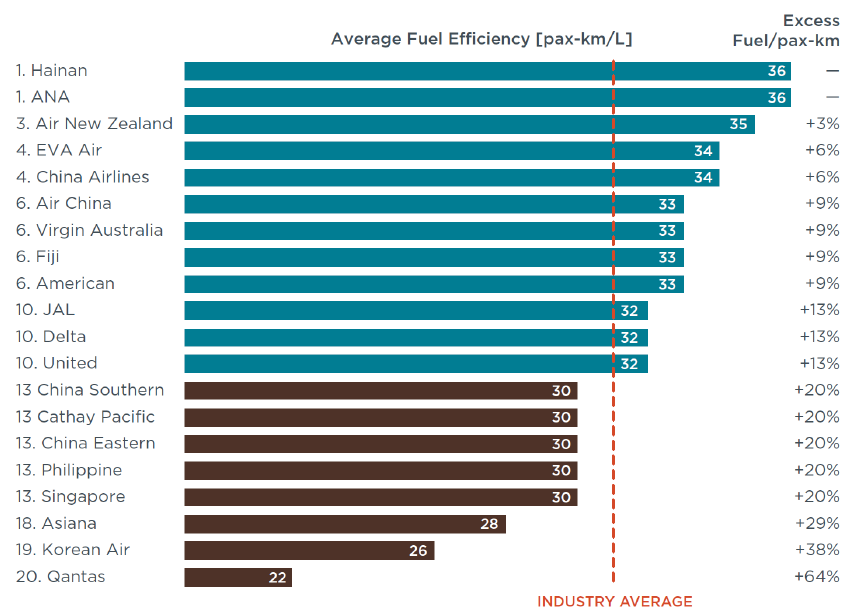 Source: International Council on Clean Transportation
Source: International Council on Clean Transportation
Making this sort of comparison attempts to simplify what is a very complex network and revenue planning decision process that airlines are constantly challenged with. And for example, "general trends" are usually qualified enormously when it gets down to specific conditions.
For example, the A380 has very little belly space for cargo. So, calculating where that puts its relative freight load factor, vis-à-vis say a 777, is mixing apples and oranges.
Then there is the need to compare things like the total consumption of a passenger who flew non-stop SYD-DFW, against a one-stop SYD to DFW via LAX for example, perhaps connecting on a 20 year old Delta DC9, to work out whether that is more fuel efficient.
It also tends to be the case that cargo load factors are lower on very long flights, because the aircraft needs more fuel to carry it and sometimes the aircraft won't make the distance if they are heavily laden. So that then comes down to a trade off between what the airline earns from carrying passengers vs cargo. And of course, what type of cargo it is (there is always a big contest between volume and weight, as well as value).
When the study says, "At the other end of the spectrum, the study attributes Qantas' inefficiency to that fact that it operated aircraft with higher fuel burn at very low passenger and freight load factors", there are two main aspects; (1) the load factor and (2) the aircraft type. The South Pacific is a more seasonal route than the North, making load factor comparisons with say Hainan Airlines difficult.
But the main overriding issue is that Qantas operates four engine aircraft, as opposed to typically more fuel efficient twin jets. That is where the big differences come in. Qantas will be moving to 787s progressively, but the lower fuel prices have helped its older 747s (average age 17 years) to a longer life, there's no doubt. And they do use more fuel per passenger, regardless of load factor.
This is also a moment in time, as fleet cycles evolve. The US majors on the south Pacific have recently introduced newer twin jets, making them more fuel efficient per unit
So indeed, the study is correct when it focusses on the generic fuel per pax consumption of the aircraft. ("A general trend the study found is the fuel burn per passenger kilometre increases along with aircraft size and weight.") That's why Virgin Australia features more economically than Qantas.
The economics (~ unit consumption/efficiency) is certainly in favour of the twin engined aircraft - as long as they are relatively young. That's the bottom line.